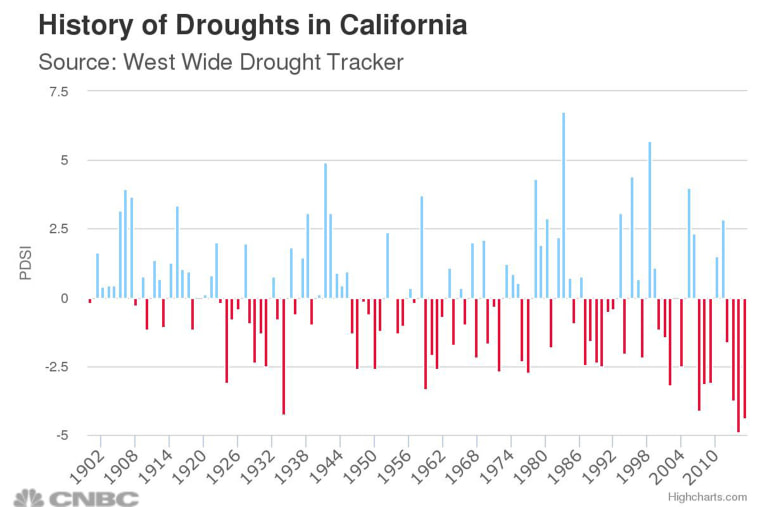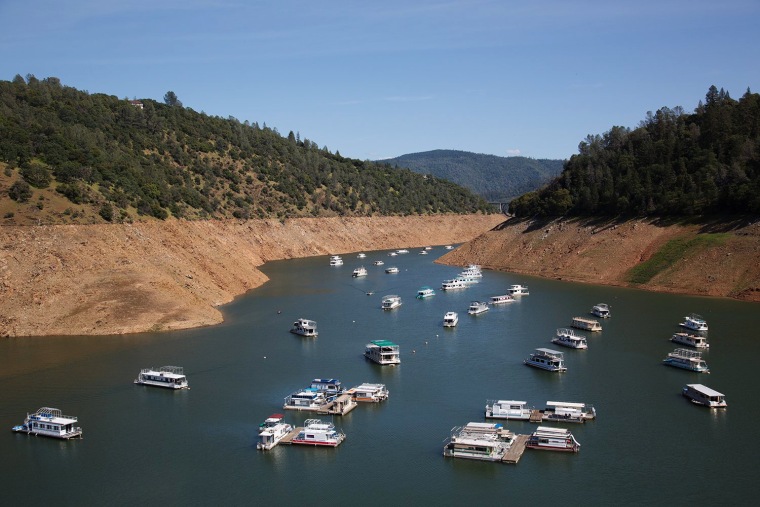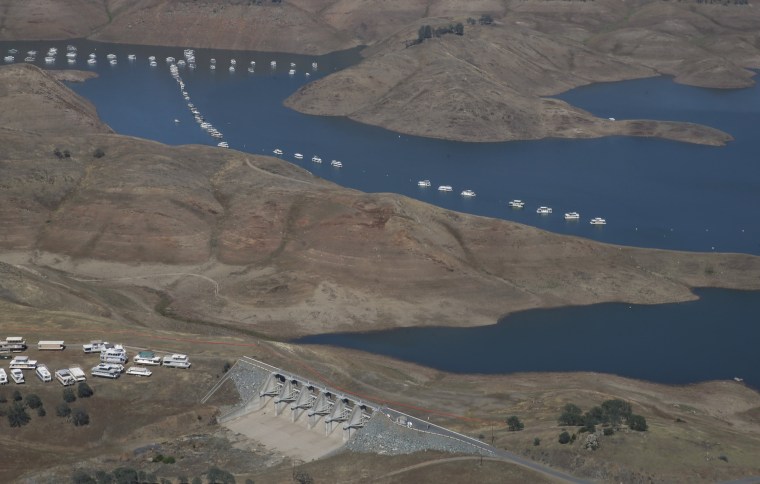From the half-million acres of parched and idle farmland to the swaths of receding reservoirs, the signs of California's historic drought are obvious.
Less obvious is just how historic the ongoing drought actually is when compared with previous dry spells in the Golden State's history.
A CNBC analysis of annual Palmer Drought Severity Index recordings, founded by meteorologist Wayne Palmer as a way to factor in both precipitation and temperature to track soil moisture, shows the nearly four-year drought is in fact the worst in over a century. The PDSI is used by the National Oceanic and Atmospheric Administration as its main drought index.

A PDSI recording of 0 reflects normal conditions, while -1 is considered to be the official drought threshold. Any recording of -4 and below signifies extreme drought.
Aiguo Dai, atmospheric and environmental sciences professor at the University of Albany, said PDSI paints a more complete picture than rainfall alone and does a better job of showing how bad things have actually gotten.
"California has been gradually warming over the last 30 years," he said. "It's an important part of the equation, because a warmer temperature means water evaporates more quickly, worsening the dryness from the precipitation deficit."
The current drought has averaged a reading of -3.67 over the last three years, nearly twice as bad as the second-driest stretch since 1900, which occurred in 1959. Ironically, that drought was battled by current Gov. Jerry Brown's father, Pat Brown. The former governor approved the California Water Project, a $1.8 billion initiative that directed water to Southern California and contributed to a boom in agriculture and population. Now his son faces an even more serious problem.

Some experts contend that rising temperatures in and of themselves might skew PDSI numbers higher in recent years, but Dai disagrees, contending that such a large difference can't be attributed solely to that bias.
"I would think this is the worst drought because the bias would not account for that much of the difference," he said.
Job and revenue losses mount in parched California
Other studies using PDSI data drawn from tree-ring observations reaching even further back in time reveal similar findings. One such study from University of Minnesota and Woods Hole Oceanographic Institute researchers showed the current drought is California's worst in at least 1,200 years.
West Coast drought: Why California water is so cheap
California still has hope that a strengthening El Niño season, which correlates with more rain in the Golden State, will bring much-needed showers.
The chance that an El Niño continues through the winter of 2015-16 now stands at more than 90 percent, according to last week's updated estimates from the Climate Prediction Center, part of the National Weather Service that focuses on El Niño forecasts.
Any effects brought on by El Niño are likely to remain weak through the summer but should increase by late fall and winter, according to the CPC, and have an 80 percent chance of continuing on into the spring of 2016.
